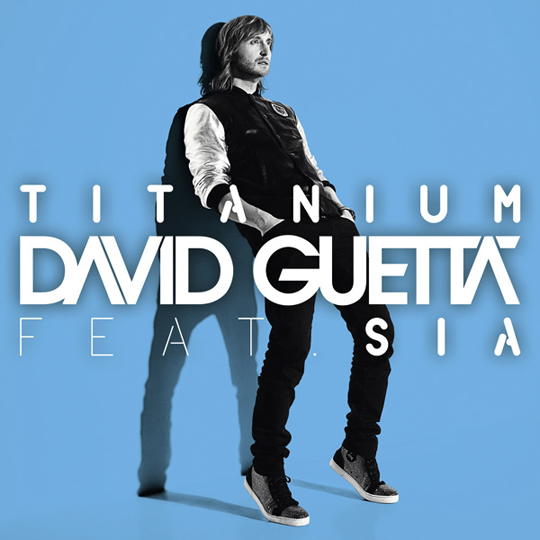Produced by David Guetta, Giorgio Tuinfort, and Afrojack
“Titanium” is a song written by Sia Furler, David Guetta, Giorgio Tuinfort, and Nick Van De Wall. Sia Furler started her career as a jazz singer, but has gained more fame as a pop and dance vocalist, releasing five albums (not including a recent “best of” album). Giorgio Tuinfort has also had success working on previous songs such as “Nothing But the Beat” and “Who’s That Chick?” with David Guetta (and Rhianna for “Who’s That Chick?”), as well as singles with Akon and Usher. Nick Van De Wall (A.K.A. Afrojack) is a Dutch DJ that has worked with the likes of Shermanology, Steve Aoki, Quintino, and The Partysquad, as well as multiple singles with Guetta. Guetta himself is an accomplished DJ and music producer, whose 2011 album release Nothing But the Beat has received many honors and awards. Guetta may be best-known for his work with The Black Eyed Peas on their 2009 hit single “I Gotta Feeling”.
Official Video
Lessons to be learned from this production:
You Don’t Have To Use The Same Instrumentation Throughout the Song
Notice the very beginning of the song. There’s a guitar in the beginning. That guitar continues through the first verse. However, it stops when we get to the pre-hook at 0:46. Another instrument takes over the job, so the function of the rhythmic melodic instrument is still in play, but there’s no need to have that same guitar playing the same part throughout the song. The guitar DOES reappear in the 2nd verse, but again, only for that section. We never hear from it again.
Do NOT feel like you must have the same instrumentation included throughout the song.
A common techniques employed by producers is to set up certain instruments as identifiers of the parts of the song. Here, the guitar tells you you’re in a verse (or the intro, but that only happens once). Experiment with different instruments in different parts of the song, like you hear here. Notice that there’s a different pulsing synth sound used for the pre-hook/hook part compared to the chorus too.
Reverb Control as Special Effect
Want to make a simple instrumental part stand out in a crowd? Add reverb, but don’t add it all the time. Play around with when it’s active and not active. Take the very beginning of this song, for example. The guitar plays a fairly simple part. Eighth notes with a bit of delay (Andy Summers would be proud!). To add some interest, Guetta plays around with adding reverb on some phrases the guitar plays, but not others. Imagine that amount of reverb on the entire guitar track – it’d be all you hear by the end. What Guetta does is turn the sends from the guitar track to the reverb on & off (a good reason to set up your reverb as an auxiliary track instead of inserted on the track) and mutes/unmutes the reverb tracks well, so that the reverb builds when the sends are on. As soon as the sends are turned off, there’s no more new reverb, and when he mutes the aux track, the existing reverb gets cut too.
Keyed Compression
One of the most prevalent music production techniques used in this track is the use of side-chained (A.K.A. keyed) compression. If you’re unfamiliar with the term, you’re very familiar with the sound. It happens in this song multiple times, on the sweep at 0:42 to 0:46, and again at 1:58 to 2:02, the synth at 1:16 to 1:32, and again at 2:32 to 2:46. Notice what happens here. As the kick hits, it causes the sweep/synth to decrease in volume.
What’s happening is called side-chain compression because a compressor (what turns down the volume) is placed on the sweep/synth, but the kick is what is actually controlling the turning down of the volume.
The kick track has been side-chained to the sweep and synth tracks, so that every time the kick hits, it turns the volume of the sweep or synth. Between kick hits, the volume of the sweep/synth is turned back up. It adds rhythmic elements to the track since the kick is rhythmic. It makes the synth track feel as if it pulses with the beat.
One of the cooler uses of this technique is to trigger this side-chain compression with a percussive track that’s not routed to the main outputs.
For an example of this, listen to 2:44 to 2:48. If you single out those two bars, notice that there’s no kick track. However, the synth is still pulsing like it was when you could hear the kick. Guetta mutes the kick track for those two bars, so you don’t hear them, but they’re still triggering the synth to turn down and up again in volume. For a fairly extensive lesson in using this technique (sometimes in more subtle ways than others), listen to Portisehead’s album Dummy.
